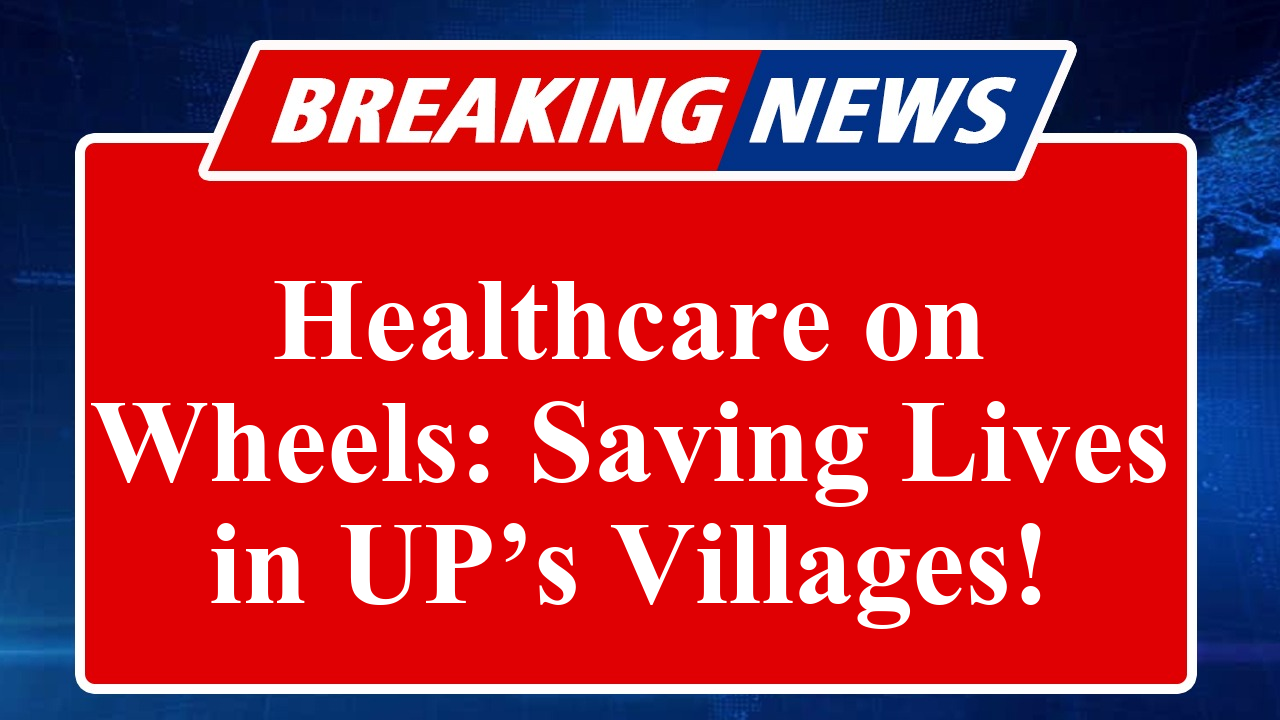“Mobile health vans in Uttar Pradesh are transforming healthcare access in remote villages, delivering free medical services, diagnostics, and health education. These vans bridge gaps in rural healthcare infrastructure, addressing ailments like diabetes and anemia while empowering communities. Despite challenges like funding and staffing, they’re a lifeline for millions in underserved areas.”
Mobile Health Vans Revolutionize Rural Healthcare in Uttar Pradesh
In Uttar Pradesh, where vast rural landscapes often lack accessible healthcare, mobile health vans (MHVs) are emerging as a game-changer. These specially equipped vehicles, part of initiatives under the National Health Mission (NHM), are designed to bring primary healthcare services directly to the doorsteps of underserved villages. With over 700 million people living in rural India and only 23,000 primary health centers available, the need for innovative solutions like MHVs is undeniable.
In 2019, Bareilly district in Uttar Pradesh introduced the National Mobile Medical Unit, with plans to deploy three additional vans to cover more than 700 villages without primary or community health centers. Each van is staffed with an MBBS doctor, a pharmacist, a lab technician, and a nurse, offering services like X-rays, ultrasounds, ECGs, and pathological tests. These units focus on a wide range of health concerns, including maternal and child health, non-communicable diseases, and basic outpatient care. On average, each van serves 60-80 patients daily, significantly reducing the burden of traveling over 30 kilometers to reach the nearest health facility.
The IndianOil Sachal Swasthya Seva, operational in Uttar Pradesh until its tenure ended, treated over 14.44 lakh patients in 2014-15 alone through 52 mobile medical units linked to rural retail outlets. These vans provided free consultations and medicines, targeting common ailments like malaria, typhoid, and diabetes. The success of such programs has prompted continued investment, with the NHM allocating Rs. 24 lakhs per van for operational costs in plain areas, and Rs. 28 lakhs for northeastern states and hilly regions.
Beyond diagnostics and treatment, MHVs serve as platforms for health education. In Uttar Pradesh, vans run by organizations like the Wockhardt Foundation and HPCL’s CSR initiatives conduct awareness sessions on hygiene, nutrition, and disease prevention. For instance, Tata Power’s mobile vans identify seasonal diseases and educate communities on preventive measures, fostering health-seeking behavior among rural populations.
Despite their impact, challenges persist. Limited government funding, inadequate staffing, and logistical issues like poor road connectivity in remote areas hinder scalability. A 2025 study on mobile health vans in Delhi NCR highlighted the lack of standardized assessment tools for diagnosing conditions like developmental disabilities, underscoring the need for better resourcing. Yet, the trust and satisfaction reported by communities, as seen in focus groups conducted by Bal Umang Drishya Sanstha, demonstrate the vans’ vital role in empowering marginalized populations.
In Uttar Pradesh, MHVs have also adapted to crises. During the 2021 COVID-19 surge in Balod district, mobile units provided testing and treatment for coronavirus-affected villages, alongside managing chronic diseases. This adaptability highlights their potential as a flexible healthcare delivery model.
Corporate partnerships are fueling expansion. Initiatives like the Smile on Wheels program by the Smile Foundation, supported by the Rural Electrification Corporation, aim to reach over 3 lakh people across India, including Uttar Pradesh’s rural pockets. These vans offer preventive, curative, and promotive services, addressing the healthcare needs of vulnerable groups like pregnant women and adolescents.
As Uttar Pradesh continues to grapple with a skewed population-to-infrastructure ratio, mobile health vans stand out as a beacon of hope. They not only deliver critical medical care but also foster community trust, ensuring that even the most remote villages are not left behind in India’s healthcare journey.
Disclaimer: This article is based on recent reports, web sources, and trends related to mobile health vans in India, including Uttar Pradesh. Data is sourced from credible outlets like the Times of India, National Health Mission, and CSR initiatives. Information may be subject to change as new developments emerge.

